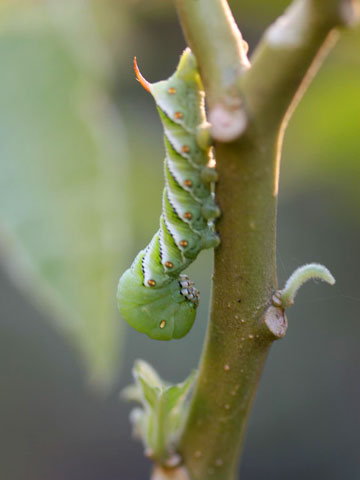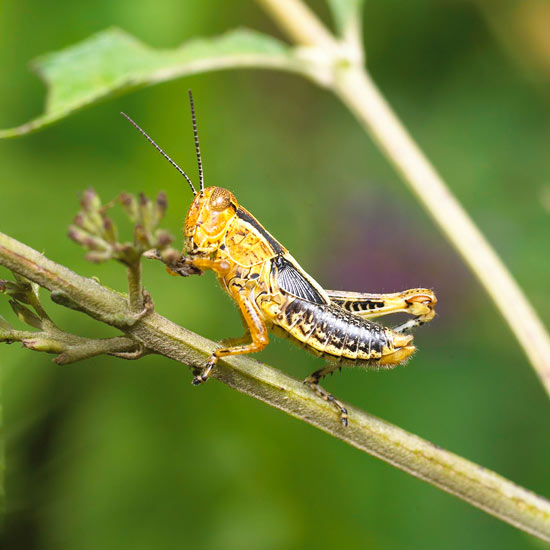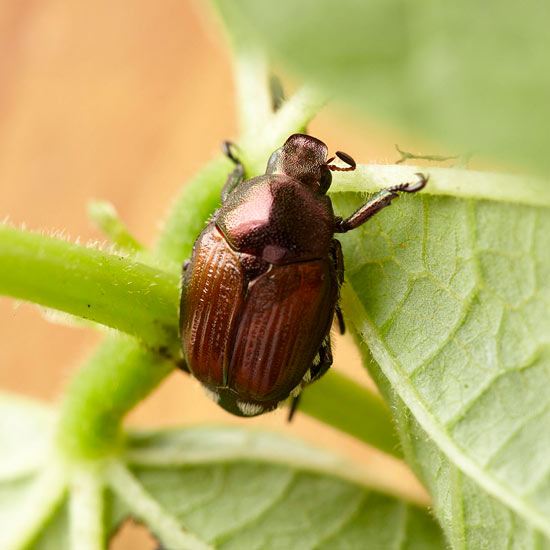






Insects are our friends AND our enemies in the garden. Today's gardeners know that some chemicals that eliminate bugs in your garden can also be bad for people, pets, and the environment. They're expensive, and they take time to apply.
To safely get rid of bad bugs in your garden, start with an Integrated Pest Management (IPM) approach to control threats to your flowers, trees, shrubs, and vegetables.
IPM combines cultural, physical, biological, and chemical tools to manage the garden. Begin by starting with the least toxic method, then work your way through six steps.
Learn how to identify and treat 10 common garden pests.
continue reading belowThe levels of Integrated Pest Management, in order of use, are:
Follow these steps on an individual basis with each type of garden bug, then proceed in order until you reach the control level that's right for you.
Establish acceptable pest levels. What is the acceptable level of aphids in your garden? Some people cannot accept any while others think they'll do relatively little overall damage and tolerate them. Leaf miners leave white squiggly lines in plant leaves; the most effective control is to simply pluck off and dispose of the affected leaves.
Learn how to control aphids.
Explore ways to stop leaf miners.

Take preventive cultural measures. If you have cabbage loopers, consider not growing plants such as broccoli, cabbage, cauliflower, and kale for a season. If you have grasshoppers, plant marigolds, calendula, or sunflowers nearby to attract robber flies, which attack grasshoppers.
Get rid of cabbage loopers.
Check out other ways to control grasshoppers.
Monitor pests. Pay attention to the garden. Look for the presence of pests such as cucumber beetles or other bugs you want to get rid of. There's no point in taking curative measures if the pest isn't present.
Figure out how to manage cucumber beetles.

Add physical controls. If you find Japanese beetles or tomato hornworms, for example, knock them off your plants into a bucket of soapy water. Wear gloves to minimize the "ick" factor. Webworms, fall-prowling caterpillars that make large nests that look like webs in the leaves of trees and shrubs, can easily be dealt with by removing the webbing with a long-handle tool, such as a rake. Once the webbing is gone, birds will find and snap up the caterpillars.
Stop Japanese beetles.
Eliminate tomato hornworms.
Beat webworms.
Use biological controls. Biological controls can take a variety of forms. Sawflies, for example, respond to a natural spray containing spinosad. You can also use "good bug" predators against some insects. Try beneficial nematodes -- microscopic worms that live in the soil -- to combat a grub problem.
Get sawflies under control.
Stop grubs.
Apply chemical controls. The last resort is always to use an insecticide. For example, you can use a variety of IPM controls to control squash bugs such as protecting plants with floating row covers, picking them off by hand, and planting marigolds, calendula, sunflower, daisy, alyssum, or dill to attract beneficial insect predators. But you may still end up needing an insecticide product containing carbaryl or permethrin.
Get rid of squash bugs.
If you're unsure which IPM measure to take, begin by researching the bug you want to get rid of. There are many natural and nontoxic ways to control garden pests.
Discover other nontoxic controls for garden pests.
Finally, remember that many bugs -- bees, lady beetles, green lacewings, and praying mantis, to name a few -- are beneficial. You want them in your yard. Don't eliminate a bug just because it's a bug!
Learn other ways to stop garden pests.
Tomato Hornworms: How to Identify and Get Rid of Garden Pests
Whiteflies: How to Identify and Get Rid of Garden Pests
Crows: How to Identity and Get Rid of Crows in the Garden
Mice: How to Identity and Get Rid of Mice in the Garden and Home
Skunks: How to Identify and Get Rid of Skunks in the Garden
Copyright © www.100flowers.win Botanic Garden All Rights Reserved